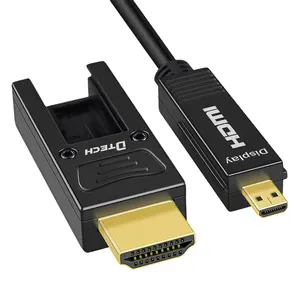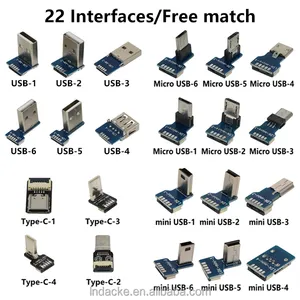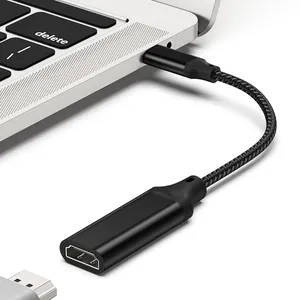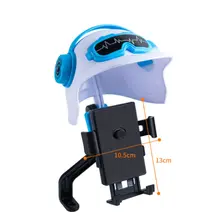The micro USB to HDMI adapter is an essential conduit for modern digital connectivity, bridging the gap between devices with micro USB interfaces and displays equipped with HDMI inputs. This adapter is indispensable for leveraging the full potential of portable devices, enabling them to connect to larger screens for enhanced viewing experiences in various settings, from boardrooms to living rooms.
Types and Characteristics of Micro USB to HDMI Adapters
Within the category of micro USB to HDMI adapters, there exists a spectrum of types, each with distinct characteristics tailored to specific devices and user requirements. For instance, some adapters are optimized for Android smartphones, providing a straightforward connection to HDTVs for media streaming or gaming. Others are designed for slimmer port interfaces, compatible with specific models of LG and Nexus phones, ensuring a secure fit and reliable connection. Universal adapters, equipped with multiple ports, including USB Type C and lightning connectors, offer unparalleled versatility, accommodating a wide array of smartphones, tablets, and other portable devices. These adapters come with various cable lengths, from short, flexible ones for close-range connections to longer cables for setups where the device and display are further apart. Additionally, they may support different HDMI standards, such as 1.4 or 2.0, and offer features like Ethernet channel or audio return channel capabilities.
Structure and Operation of Micro USB to HDMI Adapters
The structure of a micro USB to HDMI adapter is a marvel of miniaturization, encompassing several key components within its compact form. At one end, the micro USB plug connects to the source device, while the opposite end features the HDMI socket for display connection. Internally, the adapter houses an advanced circuitry that includes a converter chip responsible for translating the micro USB signal into an HDMI output. This chip is the linchpin of the adapter's functionality, ensuring that the digital signal is not only transmitted without degradation but also that it meets the HDMI standard for audio and video output. For adapters that require additional power, an external power source can be connected to enhance the signal conversion process and ensure that the connected device's battery isn't drained during use. This is particularly important for high-resolution video playback or during extended use cases.
Materials and Properties
The choice of materials in the construction of micro USB to HDMI adapters is critical to their performance. Conductors made of pure copper or gold-plated materials are preferred for their superior electrical conductivity, ensuring minimal signal loss and maximum fidelity of audio and video transmission. The casings are typically fashioned from robust materials like aluminum alloy or high-grade ABS plastic, which not only protect the internal components from physical damage but also shield the electronic circuitry from electromagnetic interference. These materials are carefully selected to strike a balance between lightweight portability and the resilience required to withstand the wear and tear of regular use.
Business Usages and Applications
The micro USB to HDMI adapter finds its place in a multitude of business scenarios. In the corporate world, it is a staple for presentations, allowing speakers to connect their handheld devices directly to projectors or large monitors, thus engaging their audience with crisp, clear visuals. In creative industries, such as graphic design or video production, the adapter is used to connect devices to larger screens for detailed editing work, enabling professionals to scrutinize their work on a larger scale and with greater clarity. In educational settings, it facilitates interactive learning by connecting educators' tablets or smartphones to classroom projectors or interactive whiteboards. The adapter also proves invaluable in retail environments for digital signage displays, where high-definition content is a must for attracting and engaging customers.
Functions and Tasks
The micro USB to HDMI adapter is designed to perform a simple yet critical task: to convert and convey audio and video signals from a device with a micro USB port to a display with an HDMI input. This functionality extends beyond mere transmission; it ensures that the signal remains uncorrupted, maintaining the integrity of high-definition video and digital audio. This enables users to perform a variety of tasks such as streaming high-definition movies, mirroring a device's screen for presentations, or extending a workspace by using a smartphone or tablet as a second monitor.
Features and Unique Selling Points
Key features of micro USB to HDMI adapters include their plug-and-play capability, which negates the need for cumbersome software installations or system configurations. They are designed to support a range of audio and video outputs, from standard definition to 4K resolution, depending on the HDMI version they are compatible with. Unique selling points that set these adapters apart from competitors include their compact and sleek design, which does not sacrifice performance for aesthetics, and their ability to charge the connected device simultaneously, a feature that is highly valued by users who are on the go.
Benefits and Positive Outcomes
Utilizing a micro USB to HDMI adapter brings a host of benefits to users. It simplifies the process of connecting devices to displays, eliminates the need for multiple cables, and supports the transmission of high-quality audio and video signals. For professionals, it means presentations can be more engaging and dynamic, while for home users, it translates to a richer, more immersive viewing experience. The adapter also fosters productivity by enabling a mobile device to become part of a larger workstation setup.
How to Use and Operate Effectively
Effective operation of a micro USB to HDMI adapter involves connecting the micro USB end to the mobile device and the HDMI end to the display. For adapters that require external power, connecting to a power source via the adapter's charging port is essential. It's important to check the display's input settings to ensure it corresponds to the HDMI port being used. Some devices may require activation of their HDMI connection settings or selection of the correct mode for output.
How to Choose the Right Adapter
Selecting the appropriate micro USB to HDMI adapter requires consideration of the device's specifications, the required HDMI version for the intended display, and any additional functionalities that may be beneficial, such as charging capabilities or multi-port connections. The build quality, including the robustness of the cable and the durability of the connectors, should also be taken into account to ensure a long-lasting and reliable connection.
How to Clean and Maintain
Regular maintenance of a micro USB to HDMI adapter is straightforward but essential. Cleaning should be done gently with a soft, dry cloth to remove any dust or debris from the connectors. It's important to avoid moisture and not to use any abrasive materials that could damage the adapter. Proper storage when not in use is also crucial; keeping the adapter in a dry, cool place away from direct sunlight will help preserve its integrity and functionality.
Target Audience and Needs
The target audience for micro USB to HDMI adapters is broad, encompassing anyone who values the ability to display content from a portable device on a larger screen. This includes tech enthusiasts, business professionals, educators, and entertainment consumers. The adapter meets the needs of this diverse user base by providing a reliable, high-quality connection that is both easy to use and versatile, catering to the myriad ways in which digital content is consumed and shared in today's interconnected world.
On Alibaba.com, a wide array of micro USB to HDMI adapters awaits, each designed to fulfill the connectivity needs of consumers and businesses alike. With a focus on quality, performance, and user satisfaction, these adapters are poised to bridge the gap between your handheld devices and the richer, more expansive visual and auditory experiences offered by larger displays.















































 浙公网安备 33010002000092号
浙公网安备 33010002000092号 浙B2-20120091-4
浙B2-20120091-4